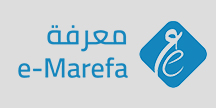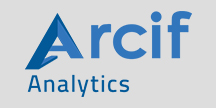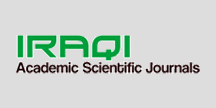Instructions for Authors
Manuscript Preparation
Language: Manuscripts should be written in clear and concise English. Contributors who are not native English speakers are strongly advised to ensure that a colleague fluent in the English language or a professional language editor has reviewed their manuscript. At proof stage, only minor changes other than corrections of printers’ errors are allowed.
Cover letter: Each manuscript should be accompanied by a cover letter containing a brief statement by the authors describing the novelty and importance of their research.
General format and length: Type the manuscript (including table legends, figure legends and references) double-spaced using 12 font size. Do not use footnotes in the text, use parentheses instead.
Manuscript Style
Two types of manuscripts will be considered for publication, including review and original articles.
- Review articles
- The topic must be current.
- The scope of the manuscript should not exceed 7500 words, excluding references, captions and Tables.
- The composition is not defined, however, the following parts are required: Title page, Abstract (unstructured; 250 words maximum), Keywords, Introduction, Acknowledgments and References (150 references maximum), Tables and Figures, if applicable, including titles and legends, and a “Conflict-of-interest” statement.
- Original articles
Manuscripts should be double-spaced with 2-cm margins on all sides of the page, in Times New Roman font. Every page of the manuscript, including the title page, references, tables, etc., should be numbered. All copies of the manuscript should also have line numbers starting with 1 on each consecutive page. Repetitive use of long sentences and passive voice should be avoided. It is strongly recommended that the text be run through computer spelling and grammar programs.
Manuscript content
The manuscript should be divided into the following sections. Principal sections should be numbered consecutively (1. Introduction, 2. Materials and methods, etc.) and subsections should be numbered 1.1., 1.2., etc. Do not number the Acknowledgements or References sections.
The manuscript should be compiled in the following order:
- Title page: should include the following
- Title: The title should be brief, concise, and descriptive. It should not contain any literature references or compound numbers or non-standardized abbreviations.
- Authors and affiliations: Supply given names, middle initials, and family names for complete identification. Use superscript lowercase letters to indicate different affiliations, which should be as detailed as possible and must include department, faculty/college, University, city and country.
- Corresponding author: Should be indicated with an asterisk, and contact details (Tel., and e-mail address) should be placed in a footnote.
- Abstract
Each manuscript should contain an informative abstract of the main points (not more than 250 words). It should describe the research purposes or motivation for the manuscript; the main finding and central conclusions. On the abstract page, authors should include a list of four to six keywords.
- Introduction
This should argue the case for your study, outlining only essential background, and should not include the findings or the conclusions. It should not be a review of the subject area, but should finish with a clear statement of the question being addressed.
- Materials and methods
Explain clearly but concisely your technical and experimental procedures. Previously published papers related to the methods should be cited with appropriate references. Brand names and company locations should be supplied for all mentioned equipment, instruments, chemicals, etc.
Protection of Human Subjects and Animals in Research. When reporting experiments on human subjects, authors should indicate whether the procedures followed were in accordance with the ethical standards of the responsible committee on human experimentation (institutional and national) and with the Helsinki Declaration of 1975 (revised in 2008). When reporting experiments on animals, authors should be asked to indicate whether the institutional and national guide for the care and use of laboratory animals was followed.
- Results
Findings must be described without comments. It must be presented in the form of text, tables and figures. The same data or information given in a Table must not be repeated in a Figure and vice versa. It is not acceptable to repeat extensively the numbers from Tables in the text or to give lengthy explanations of Tables or Figures.
- Discussion
This should emphasize the present findings and the variations or similarities with other work done in the field by other scientists. The detailed data should not be repeated in the discussion again. Emphasize the new and important aspects of the study and the conclusions that follow from them. It must be mentioned whether the hypothesis mentioned in the manuscript is true, false or no conclusions can be derived.
- Conclusion
The main conclusion(s) of the study should be presented in a short conclusion statement that can stand alone and be linked with the goals of the study. State new hypotheses when warranted. Include recommendations when appropriate.
Acknowledgement
All contributors who do not meet the criteria for authorship should be covered in the acknowledgement section. It should include persons who provided technical help, writing assistance and departmental head who only provided general support. Financial and material support should also be acknowledged.
Conflict of interest
Authors must acknowledge and declare any sources of funding and potential conflicting interest, such as receiving funds or fees. When there is no conflict of interest, the author should mention it at the end of manuscript, prior to References.
- References
References should be prepared strictly according to the Harvard style. All references in the text must be specified by the authors’ last names and date of publication.
You should cite publications in the text as (Adams, 2006) using the first named author's name or (Adams and Brown, 2006) citing both names of two, or (Adams et al., 2006), when there are three or more authors except when the author is mentioned, e.g ”the study of Shena et al. (2015) was modified….”.
At the end of the manuscript a reference list in alphabetical order should be supplied:
For books:
Author. Year. Title, Place Published, Publisher.
e.g. Harrow, R. 2005, No Place to Hide, Simon & Schuster, New York, NY.
For book chapters
Author. Year. Title. In: Editor (ed.)^(eds.) Book Title. Edition ed. Place Published: Publisher.
e.g. Calabrese, F.A. 2005, "The early pathways: theory to practice – a continuum", in Stankosky, M. (Ed.), Creating the Discipline of Knowledge Management, Elsevier, New York, NY, pp. 15-20.
For journal articles
Author. Year. Title, Journal, Volume, Pages.
e.g. Capizzi, M.T. and Ferguson, R. 2005. Loyalty trends for the twenty-first century, Journal of Consumer Marketing, 22 (2), 72-80.
Tables
Submit Tables on separate pages and number them consecutively using Arabic numerals. Provide a short descriptive title, column headings, and (if necessary) footnotes to make each Table self-explanatory. In the footnote, refer to information within the table with superscript lowercase letters, and do not use special characters or numbers. Separate units with a comma and use parentheses or square brackets for additional measures (e.g., %, range, etc.). Refer to Tables in the text as Table 1, etc. Use Table 1 (boldface), etc. in the title of the Table.
Figures
The number of figures should be not more than 6 and appropriate for the presented data. Please make sure that artwork files are in an acceptable format (JPEG) and of high resolution (300 dpi or more). Figures should be referred to as Figure 1, Figures 2, 3-5 (boldface), using Arabic numerals. Each figure must be accompanied by a legend clearly describing it. All aspects of the figures and legend must be fully understandable in a stand-alone format.
Abbreviations and symbols
Use only standard abbreviations and avoid using them in the title. The full term for which an abbreviation stands should precede its first use in the text unless it is a standard unit of measurement.
Manuscript Submission
All manuscripts must be submitted electronically via the Internet to the ZJHS through the online system at https://zancojournal.su.edu.krd/index.php/JAHS/Home. You will be guided stepwise through the creation and uploading of the various files. There are no page charges.
Manuscripts are accepted for publication on the understanding that they have not been published and are not going to be considered for publication elsewhere. Authors should certify that neither the manuscript nor its main contents have already been published or submitted for publication in another journal. After a manuscript has been submitted, it is not possible for authors to be added or removed or for the order of authors to be changed. If authors do so, their submission will be cancelled. Manuscripts may be rejected without peer review by the editor-in-chief if they do not comply with the author guidelines or if they are beyond the scope of the journal.
After Acceptance
Availability of accepted article
This journal makes manuscripts available online as soon as possible after acceptance (in PDF format). A Digital Object Identifier (DOI) is allocated, thereby making it fully citable and searchable by title, author name(s) and the full text.
Proofs
One set of page proofreads (as PDF files) will be sent by e-mail to the corresponding author. Please use this proofreads only for checking the typesetting, editing, completeness and correctness of the text, tables, and figures. We will do our best to get your article published as soon as possible.
The Final Checklist
Before submitting the manuscript for publication, the authors have to confirm that they accomplished the followings:
- The title page should include the title, author/co-authors' names, designation, and affiliations, as well as an e-mail address for future interaction. ORCID, email and phone numbers for the corresponding author should be provided.
- Provide the names of at least three peer-reviewers who might be requested to review the manuscript.
- An unstructured abstract of no more than 250 words.
- As previously indicated, references are mentioned and produced using reference management systems (for example, Endnote, Mendeley, Zotero...etc.).
- Tables should be created on a separate page.
- Figures should be submitted as separate JPG files with a resolution of 300X300 dpi, and figure captions should be included at the end of the manuscript.
- Declaring any possible conflicts of interest.
- The cover letter.









